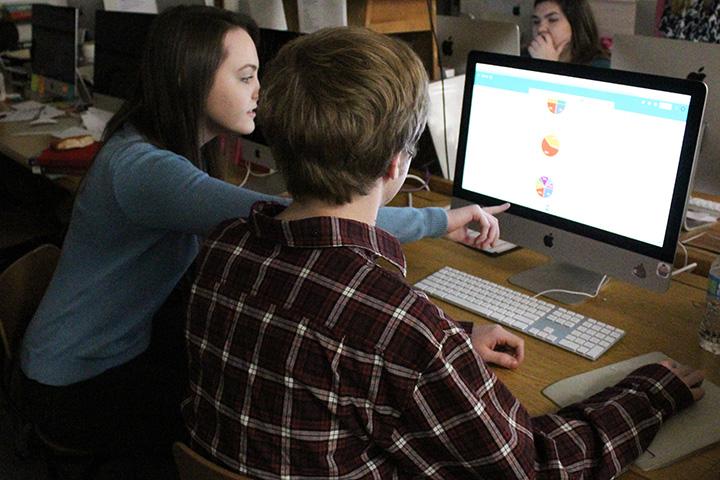AP Statistics students conduct annual surveys (photo)
Seniors Collin Starr and Jess Angelichio observe their survey results from the statistics project. The project has been apart of the AP Statistics curriculum for five years. “Collin and I polled the student body at random to see what their favorite meme from 2016 was. They got to choose from different memes such as Harambe and Joe Biden. The project helped with our understanding of sampling a large population, which we were learning about at the time. Our final results showed that Harambe was the favorite among students at PAHS,” Angelichio said.
In Mrs. Michele Rhody’s AP Statistics class, students participated in a survey project that has been an AP Stat tradition for the past five years.
“I do the sample survey because I think it’s a good hands-on way for the students to learn about [things such as] the sampling method, biases within sampling and survey creation,” Mrs. Rhody said. “It allows students to learn through using topics they enjoy.”
The AP Statistics groups got to pick their own topic, and then were assigned to a grouping of other students in all grades. To get their survey results, the students were only allowed to use people from the list they were given.
“Collecting student answers gives them variety with all of the grade levels and teaches them about different ways of grouping individuals and analyzing data,” Mrs. Rhody said.
Seniors Jeremy Dellock, Michael Holobetz and Michael Botto conducted a survey about how their peers would feel about winter sports pep rallies in addition to the weekly fall sports pep rallies.
“Out of 32 students, 27 answered yes to having winter sports pep rallies,” Dellock said.
One of the reasons Mrs. Rhody enjoys doing this project with her students is because the project reinforces the concepts and terminology. Students are actually performing these surveys and collecting the information themselves. They learn what sampling methods are most effective for certain situations.
“It’s important for all types of classes to do more hands-on learning for students. Anything I could do to supplement learning helps. [Students] discover much more when their experience is hands-on. They could read from the book about how surveys are to be done, sure, but they don’t completely understand how to actually do it until they complete one. It’s a more real-world way to learn things and connects better with the students.”



